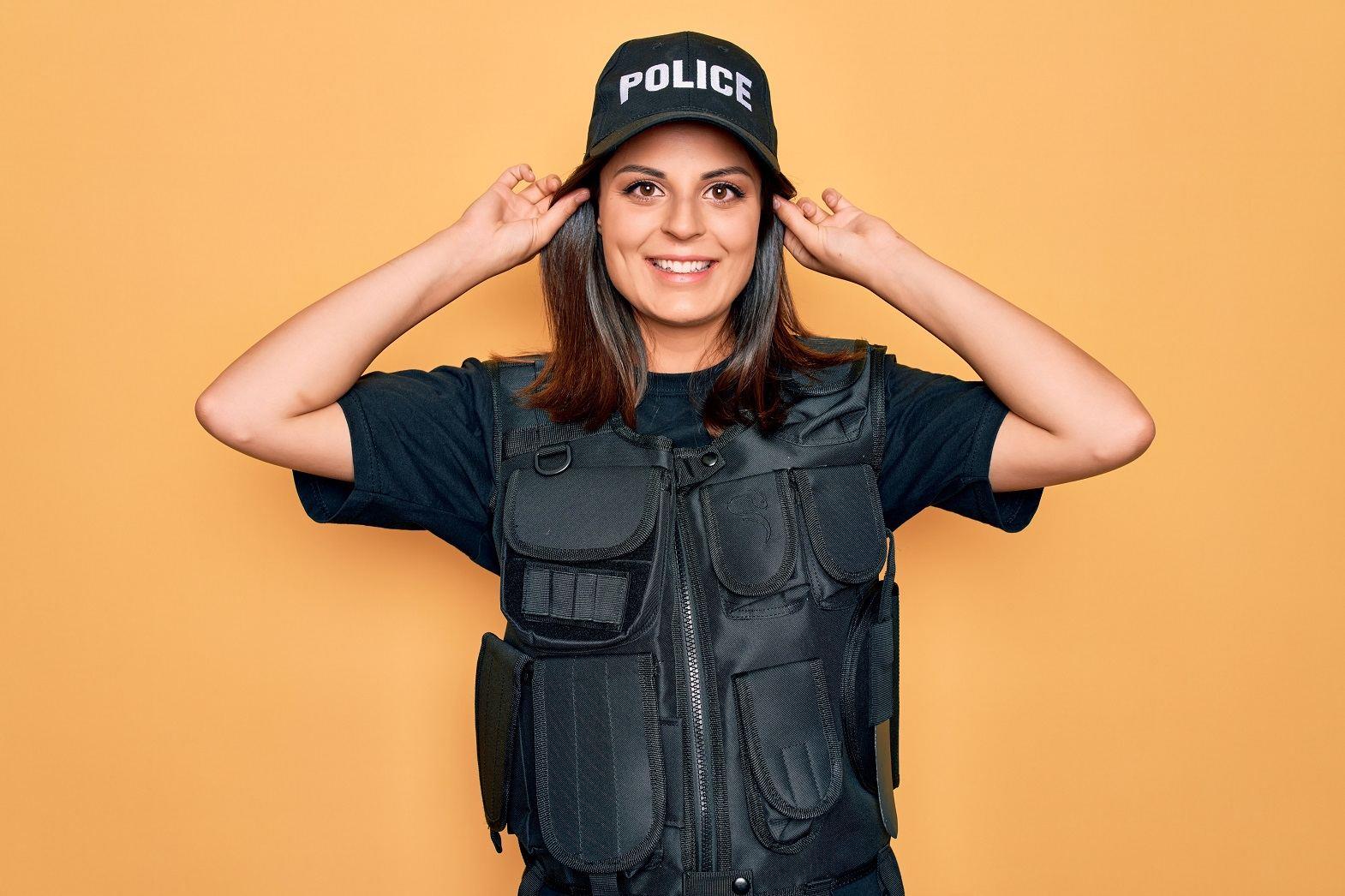After several experiments and trial and error, developers have discovered materials that could be used to make bulletproof vests stronger and better than ever. Today, there is superior quality bulletproof clothing available. In reality, a bulletproof vest is bullet-resistant, which implies that the vest will stop certain types and sizes of bullets traveling up to a certain speed from penetrating the vest and entering the individual. However, if the vest stops a bullet, it may still force the vest fabric into the body of the individual. This can cause bruising or more severe internal injury.
Poly-para-phenylene terephthalamide is a liquid polymer that can be spun into aramid fiber and woven into cloth. This liquid polymer is sold under the registered trademark names Kevlar or Twaron. The early use of Kevlar involved tires, ropes, gaskets, and various parts for planes and boats. It was in 1971 that Lester Shubin of the National Institute of Law Enforcement and Criminal Justice realized and supported the use of Kevlar in bulletproof vests. Thus, the bulky ballistic nylon that was earlier used in bulletproof vests was replaced by the liquid polymer - Kevlar. Later on, a replacement for Kevlar was developed by a company and registered as Spectra. The original use of Spectra was for sailcloth; the polyethylene fiber is now used in making lighter yet stronger nonwoven material for use in bulletproof vests. Kevlar or Twaron fibers are widely used in composites which are lighter than those based on carbon fiber and electrically insulating.
The raw material that bulletproof clothing uses is completely capable of combating any kind of firearms attack. The vest has a panel and a sheet of superior plastic polymers that consist of several layers of either Kevlar, Spectra Shield, or, in other countries, Twaron or Bynema. The layers of woven Kevlar are sewn together using Kevlar thread, while the nonwoven Spectra Shield is coated and bonded with resins such as Kraton and then sealed between two sheets of polyethylene film.
The vest is strapped onto the wearer's body with the help of a strap device. The sides of the vest are connected with elastic webbing. The buckles used in the elastic webbing are made of metal and sometimes Velcro closures are also used. When a bullet strikes the body armour, the strong fibres scatter its energy and the additional energy is absorbed by each successive layer of the jacket till the bullet is stopped.
The manufacturing process of bulletproof jacket involves three steps. Firstly, the Kevlar cloth is made by weaving the Kevlar yarn in simple or plain pattern. The polymer poly-para-phenylene terephthalamide is produced in the laboratory to make Kevlar. This is attained through a process of polymerization, in which molecules are combined into long chains. This results into a crystalline liquid with polymers that are in the shape of rods. This is then passed through a small metal plate full of tiny holes that looks like a shower head to form Kevlar yarn. After this, in order to harden the Kevlar fibre, it is passed through a cooling bath and then the synthetic fibre is wound onto rolls. The fibre is then twisted into yarn to make it suitable for weaving. If Spectra shield is used then it is nonwoven and it is spun into fibres that are laid parallel to each other. The fibres are coated with resin and are fastened together to form a piece of spectra cloth. After this panels are cut and then sewed. The vest panels are sewn together in the normal standard manner.
The current developments in bulletproof clothing include nano-infused fabrics. A company in Israel and some companies in France are working on similar fabrics to be used for bulletproof clothing. The military organisations of U.S.A. and England have shown interest in body armour clothing made from carbon fibre woven from carbon nanotubes.
Bulletproof clothing is protective and is mostly used by defence and police personnel. Globally, Mexico is the single largest market for the bulletproof clothing. Several studies have been conducted revealing that lives of hundreds of police officers are saved every year following use of such vests. The efficiency and ease of bulletproof clothing will improve with development of lighter, but stronger materials. There is an ever-growing market for comfortable soft body armours that can fit under clothes, or even be worn as an outer jacket. The safety of the defense and police personnel is important and the countries are now ensuring that they dress accordingly.
References:
1. Azom.com
2. Safeguardclothing.com
3. Wikipedia.com
4. Madehow.com








Comments